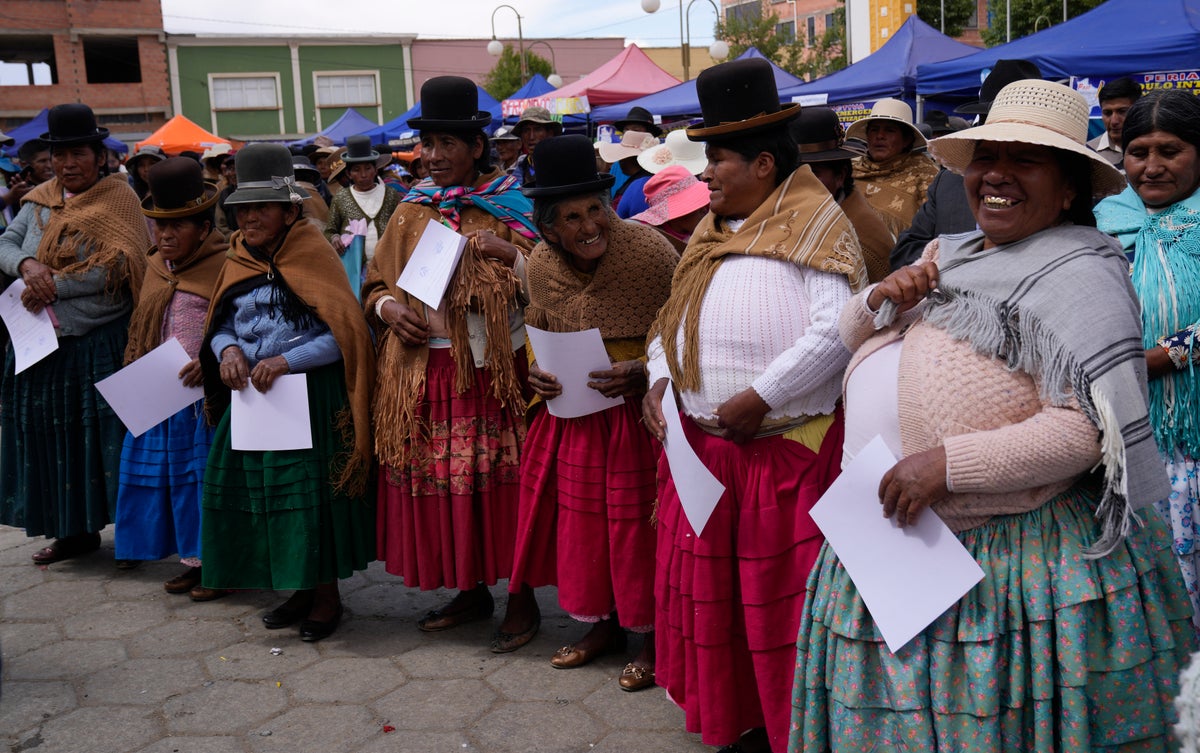
Anacleta Mamani has no teeth, but a happy smile: She’s learned to read and write at the age of 71, and now feels so empowered, she wants to run a road race in her indigenous community in the Bolivian highlands near La Paz.
Mamami is among more than 20,000 senior citizens, mainly women from low-income rural communities, who have learned to read and write this year as part of “Bolivia Reads,” a government-sponsored literacy program.
“I don’t want to die without knowing how to read and write,” said Mamami, who learned to do both in Aymara, her mother tongue. She joined nearly a thousand other Indigenous people who displayed reading, math and other skills to juries and shared a communal meal before receiving their literacy certificates on Sunday in the central plaza of Pucarani, the main town of the region near Lake Titicaca.
Bolivia, one of the poorest nations in South America, had an illiteracy rate of 23% in 1995. Thanks to “Bolivia Reads,” that’s been reduced to 2.7%, making Bolivia one of the region’s countries with good levels of literacy, according to the United Nations Educational, Scientific and Cultural Organization.
Most of the students had to work as children, or couldn’t afford the costs. Some never stepped foot in a school.
Susana Falcón, the education secretary of the town of Pucarani, gets emotional as she recalls the tears of a 90-year-old man when he was able to write his own name.
These are determined learners, but the lessons have come awfully late for some, and they all need the government’s help, said Carlos Montes, an adult education teacher.
“Many came here by foot from distant communities. They’re motivated to learn, but they sleep during the classes, and some soon forget their lessons because they’ve got symptoms of Alzheimer’s,” Montes said.
Wilma Mamani, 36, had to quit school as a child to help her parents in the fields. She learned to read and write this year so she could help her children. “Many times I felt ashamed, not being able to help them when they had questions with their homework,” she said.
Illiteracy is highest in the most rural areas of Bolivia, particularly in the semi-arid flatlands between Andean peaks, more than 3,800 meters above sea level. A prolonged drought has made life even more difficult for these people, who traditionally have cultivated potatoes, quinoa and fava beans and raised llamas and sheep.
The literacy students also have been taught how to build solar greenhouses that make it possible to grow fruit, vegetables and medicinal plants in a region where only potatoes could be grown before. And along with their diplomas, each graduate was given two chicks to raise as a gift from the town.
“I studied for two years when I was a kid, but I left school and I forgot. Now I’m learning again,” said Eloy Poma, a 62-year-old farmer who received a laptop from the education ministry. “I want to learn more. Already I can use the computer and provide guidance to my community.”







